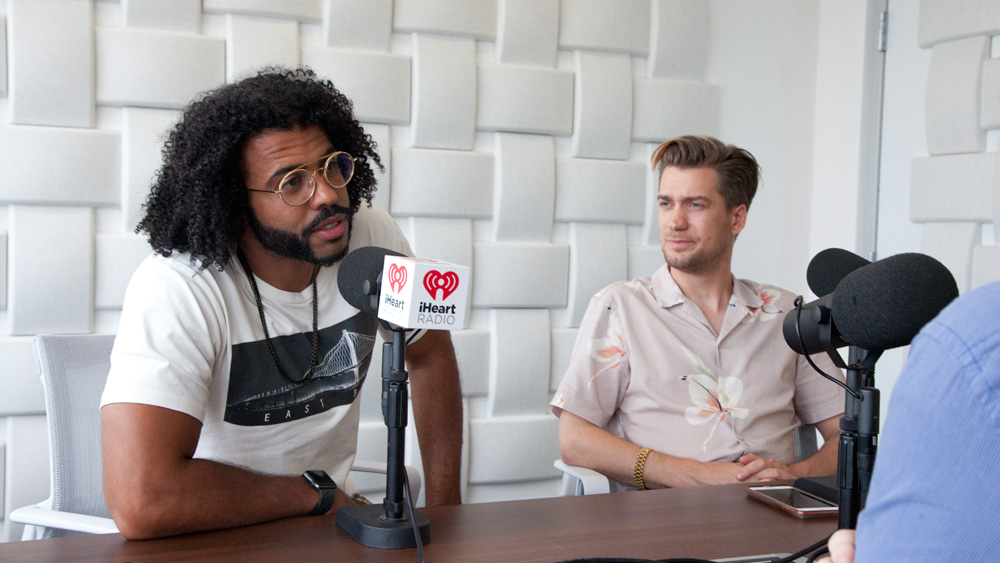Listen: Daveed Diggs and Rafael Casal on Bay Area Music and ‘Blindspotting’
By Kristopher Tapley
LOS ANGELES (Variety.com) – Welcome to “Playback,” a Variety / iHeartRadio podcast bringing you exclusive conversations with the talents behind many of today’s hottest films.
Daveed Diggs and Rafael Casal met at a poetry slam and bonded over music while coming up in the Bay Area. They worked feverishly to crank out albums and mix tapes and assembled an Oakland collective, The Get Back, to stretch their creativity with like minds. Diggs has since gone on to become the Grammy- and Tony-winning star of the hit musical “Hamilton” and carve his path in television series like “The Get Down” and “black-ish,” while Casal is poised to take off with his first role alongside Diggs in “Blindspotting.” The film, which the duo wrote and developed for the better part of a decade, premiered at the Sundance Film Festival. It’s a searing portrait of the Oakland they see quickly evaporating, as well as an avenue for them to explore verse-driven narrative on the big screen.
Listen to this week’s episode of “” below. New episodes air every Thursday.
Click here for more episodes of “Playback.”
“The lynchpin was about verse and us wanting to tell a Bay Area story,” Diggs says. “Around that same time, Oscar Grant was killed at Fruitvale BART story, so all of a sudden, in order to tell a Bay Area story, that’s the story we’re talking about. That was just in the air. Oscar’s face was everywhere and there was all these protests and riots.”
The themes developed out from there. By virtue of the world they were writing about, topics like gentrification and identity organically came to the fore.
“I don’t even know that gentrification was a word we were throwing around as a major theme. It was a convention we could use,” Casal says. “Originally the idea of [our characters] as movers was the way to get around to all these points of view in the city. What happened was over 10 years, it went from, like, ‘There is an influx of people’ to ‘There is a massive takeover of people not from the Bay Area.’ So the urgency raised for us, about this time capsule at this moment.”
Innovating in media is something Diggs and Casal say Bay Area artists take a lot of pride in. It’s inherently in the spirit of art coming out of the area, and both come from what Casal calls “that multi-hyphenate artist generation where you always do five other things,” so it was inevitable their work with verse on the stage would bleed into cinema.
“The earliest examples of theater are in verse,” Diggs says. “Verse has been around as a mode of storytelling for a long time. We came up through this poetry scene in which you learn verse skills in order to force people to listen to you. It’s why you teach kids poems, because nobody cares what they have to say so you make it sound pretty and then everyone will listen to you. But there’s technique to that, too … We didn’t want it to feel like a musical and we didn’t want to make [the characters] aspiring musicians. This is a practical and fun tool, used in the way we sort of grew up using it. And that’s a very Bay Area thing. Language is so important to us. And we imagine it can be an important tool in film as well.”
For more, including tons of discussion about the Bay Area hip-hop scene of the last 20 years, listen to the latest episode of “Playback” via the streaming link above.
Hear more episodes of “Playback” at iHeartRadio .
Subscribe via iTunes .

